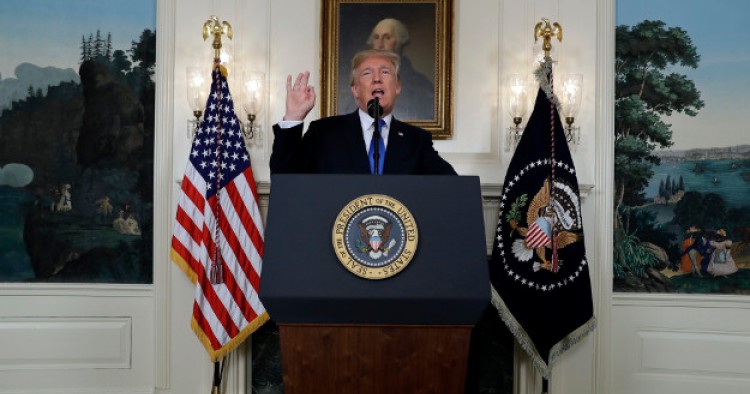This piece was co-authored by Bilal Saab and Kenneth M. Pollack, resident fellow at the American Enterprise Institute. Read the full op-ed on the Wall Street Journal.
From Saad Hariri’s resignation as Lebanon’s prime minister to the Houthi missile attack on Saudi Arabia, the Middle East is again in uproar, thanks to the acute Iranian threat America’s regional partners perceive. Without a U.S.-led initiative to limit Iran’s regional sway, U.S. allies will act on their own and escalate regional crises.
That’s why the Iran policy the Trump administration rolled out last month is important. It’s an effort to forge a comprehensive strategy. Its smartest aspect is that it recognizes that merely curbing Tehran’s nuclear ambitions won’t end its aggressive behavior across the region. But there are good and bad ways to push back against Iran, and the administration so far seems focused on the bad. Syria and Iraq are the places to execute an Iran strategy effectively—not Yemen or Lebanon, and certainly not over the nuclear deal.
Iran has gone all-in on Syria, and while it is winning, it is also badly overexposed. It cannot afford to let the Assad regime sink, risking the demise of Hezbollah and the dissolution of Tehran’s hard-won position in the northern Levant.
Washington could take advantage of this by ramping up covert assistance to Syrian rebels to try to bleed Damascus and its Iranian backer over time, the way the U.S. supported the Afghan mujahedeen against the Soviets in the 1980s. But that runs directly contrary to President Trump’s purported desire to wash his hands of Syria after ISIS is evicted.
The Middle East Institute (MEI) is an independent, non-partisan, non-for-profit, educational organization. It does not engage in advocacy and its scholars’ opinions are their own. MEI welcomes financial donations, but retains sole editorial control over its work and its publications reflect only the authors’ views. For a listing of MEI donors, please click here.













